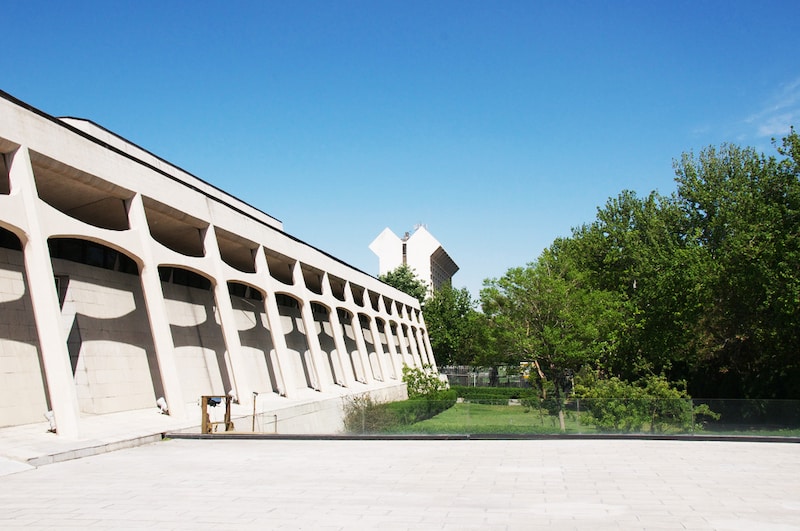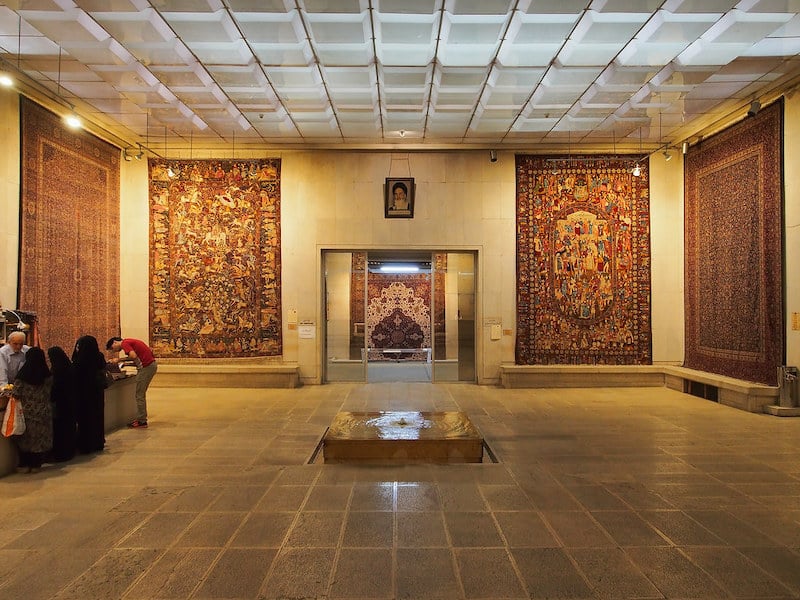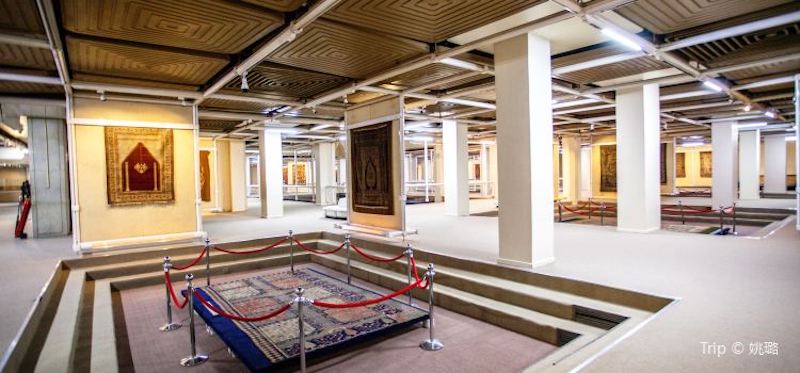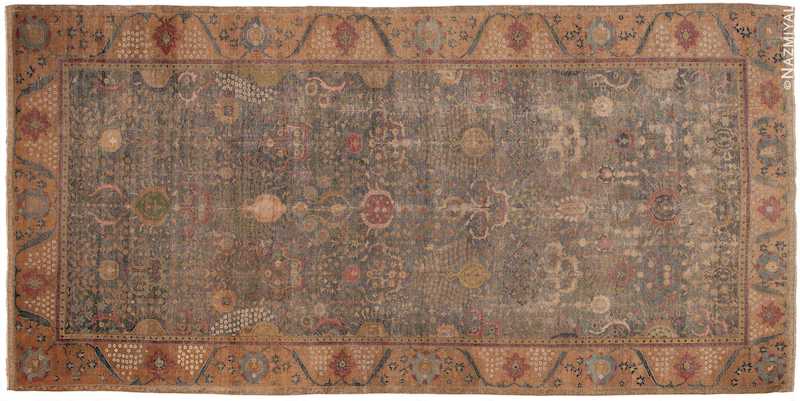Iran’s Famous Tehran Carpet Museum
What is the Carpet Museum in Tehran Iran?
Situated within Tehran, adjacent to Laleh Park, and established in the year 1976, the Iran Carpet Museum showcases a diverse array of Persian carpets hailing from across the expanse of Iran, spanning epochs from the 16th century up until the contemporary era.
The exhibit space of the museum encompasses a substantial 3,400 square meters (approximately 37,000 square feet), a figure that awaits verification through citation. Nestled within its confines is a library housing an approximate collection of 7,000 volumes.
The architectural brainchild behind this institution is Abdol-Aziz Mirza Farmanfarmaian. The outer perimeter of the museum is adorned with a perforated structure that masterfully emulates a loom for crafting carpets. This dual-purpose design not only pays homage to the art within but also serves to cast cooling shadows upon the outer walls, thus mitigating the scorching impact of the summer sun and sustaining a temperate internal environment.
The Tehran Carpet Museum of Iran is one of the world’s few museums that specializes only in carpets. Persian carpets are well known all around the world, and this museum offers the rare and exciting opportunity to visit and appreciate them in their country of origin.
History of the Tehran Carpet Museum of Iran
The museum was designed by Farah Pahlavi, who was the last queen of Iran before leaving the country due to the impending Iranian revolution. Pahlavi was known for her extensive, active interest in promoting and contributing to Iran’s arts and culture. The architecture of the museum itself was designed by architect Abdol-Aziz Farmanfarmaian. The exterior’s seemingly strange architecture has an interesting meaning: it was designed to look like a carpet loom. It also serves the second, utilitarian purpose of creating shade on the interior walls, shielding the museum from Iran’s hot sun.

The exterior of the Carpet Museum of Iran.
The museum opened in February of 1976. It was intended to keep the art of carpet weaving alive as well as be a place to gather the most beautiful carpets from all over the country and across time, and it did just that. The museum has become a hotspot for lovers of antique art and the art of weaving, as well as historians and researchers. The entry to the museum displays a map of Iran’s iconic weaving centers such as Kerman and Tabriz. From time to time, a Persian carpet weaver will be sitting at a loom in the museum to demonstrate to visitors how carpets are woven. The museum also showcases various weaving tools, natural rug dye materials and threads, so that not only do visitors experience the carpets themselves, but how the carpets are made as well.
Inside the Tehran Carpet Museum Tehran
The first floor of the museum holds beautiful permanent carpet collection exhibits. The museum’s second floor, however, is reserved for seasonal or temporary exhibits. The museum’s permanent selection usually displays around 200 carpets at a time. At the museum’s founding, there was a limited selection of carpets, but over the years that number has increased greatly.
The museum’s collection includes so many rare rugs and beautiful carpets, including carpets from the country’s most famous weaving centers. The valuable carpets were woven as far back as the 9th century and date up until the present.

Beautiful carpets on display at the Carpet Museum of Iran.
Iranian Carpet Museum More than Carpets
The Iranian carpet museum in Tehran, dedicated to preserving every aspect of precious Persian carpets and their art and history, provides more than just beautiful rugs to look at. The museum’s library contains thousands of books in multiple languages, including Farsi, English, German, French, and Arabic. These books are a collection of some of the most important and rare publications and research about Persian carpets available. Furthermore, the collection also includes cultural books on religion, art, and literature. They’re available to researchers, students, and art lovers alike, and the adjacent bookstore has pieces available for purchase.

The museum has an extensive collection, as well as a library, classes, and a repair center.
Not only does the museum have a collection of precious books available to the public, but it also offers many classes to the public. Designed to keep the art of rug and kilim weaving alive, these rug classes teach everything from carpet weaving, to the meaning of carpet design motifs, to the repair of damaged Persian rugs. Students who complete these courses are awarded a certificate. And, driven by demand of carpet collectors, the museum also has a carpet restoration and repair shop open to the public.
Visitors to the museum can also expect to make a stop at the museum’s tea shop after a long day of browsing carpets and history. Reminiscent of the traditional Iranian coffee shops, this spot welcomes visitors to sit and relax while they learn.
As you can see, the Tehran Carpet Museum of Iran has an interesting history, and still wows visitors to this day with its stunning collection.
Here are some beautiful antique Persian carpets from the Nazmiyal Collection:
This rug blog about the Tehran Carpet Museum of Iran was published by Nazmiyal Antique Rugs.





